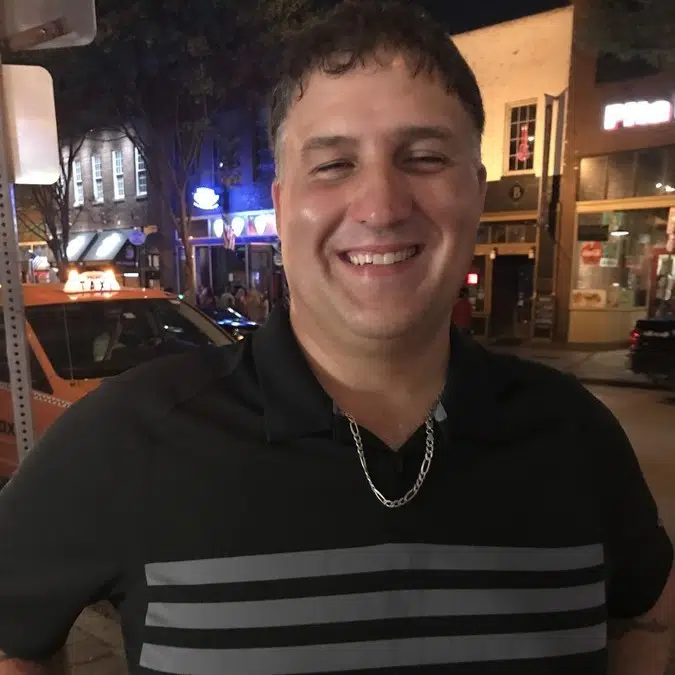Massachusetts Sports Betting
Online sports betting and retail sportsbooks are legal in Massachusetts.
The first Massachusetts sports betting sites and mobile apps launched in March 2023 after receiving approval from the state gaming commission.
Sportsbooks at casinos opened to the public and began taking in-person wagers in January 2023. Race tracks and off-track betting parlors (OTBs) may also apply for licenses to operate sportsbooks in Massachusetts.
Other Massachusetts online betting options include pari-mutuel horse racing wagering and daily fantasy sports.
Legal Massachusetts Betting Sites
 $1500 In Bonus BetsBetMGM Bonus Code: BUSABONUS
Gambling problem? Call 1-800-GAMBLER (available in the US). Call 877-8-HOPENY or text HOPENY (467369) (NY). Call 1-800-327-5050 (MA). 21+ only. Please gamble responsibly. Call 1-800-NEXT-STEP (AZ), 1-800-BETS-OFF (IA), 1-800- 981-0023 (PR). First bet offer for new customers only. Subject to eligibility requirements. Bonus bets are non-withdrawable. In partnership with Kansas Crossing Casino and Hotel. See BetMGM.com for terms. US $1500 promotional offer not available in New York, Nevada, Ontario, or Puerto Rico.
$1500 In Bonus BetsBetMGM Bonus Code: BUSABONUS
Gambling problem? Call 1-800-GAMBLER (available in the US). Call 877-8-HOPENY or text HOPENY (467369) (NY). Call 1-800-327-5050 (MA). 21+ only. Please gamble responsibly. Call 1-800-NEXT-STEP (AZ), 1-800-BETS-OFF (IA), 1-800- 981-0023 (PR). First bet offer for new customers only. Subject to eligibility requirements. Bonus bets are non-withdrawable. In partnership with Kansas Crossing Casino and Hotel. See BetMGM.com for terms. US $1500 promotional offer not available in New York, Nevada, Ontario, or Puerto Rico.
 Bet $5 Get $150 If It WinsFanDuel Promo Code: Not Needed
Gambling Problem? Call 1-800-GAMBLER or visit RG-Help.com. Call 1-888-789-7777 or visit ccpg.org/chat (CT). Hope is here. GamblingHelpLineMA.org or call (800) 327-5050 for 24/7 support (MA). Visit www.mdgamblinghelp.org (MD). Call 1-877-8HOPE-NY or text HOPENY (467369) (NY). 21+ (18+ D.C.) and present in select states (for KS, in affiliation with KS Star Casino). First online real money wager only. $5 first deposit required. Bonus issued as nonwithdrawable bonus bets which expire 7 days after receipt. Restrictions apply. See terms at sportsbook.fanduel.com.
Bet $5 Get $150 If It WinsFanDuel Promo Code: Not Needed
Gambling Problem? Call 1-800-GAMBLER or visit RG-Help.com. Call 1-888-789-7777 or visit ccpg.org/chat (CT). Hope is here. GamblingHelpLineMA.org or call (800) 327-5050 for 24/7 support (MA). Visit www.mdgamblinghelp.org (MD). Call 1-877-8HOPE-NY or text HOPENY (467369) (NY). 21+ (18+ D.C.) and present in select states (for KS, in affiliation with KS Star Casino). First online real money wager only. $5 first deposit required. Bonus issued as nonwithdrawable bonus bets which expire 7 days after receipt. Restrictions apply. See terms at sportsbook.fanduel.com.
 Bet $5 Get $150 If It WinsFanDuel Promo Code: Not Needed
Gambling Problem? Call 1-800-GAMBLER or visit RG-Help.com. Call 1-888-789-7777 or visit ccpg.org/chat (CT). Hope is here. GamblingHelpLineMA.org or call (800) 327-5050 for 24/7 support (MA). Visit www.mdgamblinghelp.org (MD). Call 1-877-8HOPE-NY or text HOPENY (467369) (NY). 21+ (18+ D.C.) and present in select states (for KS, in affiliation with KS Star Casino). First online real money wager only. $5 first deposit required. Bonus issued as nonwithdrawable bonus bets which expire 7 days after receipt. Restrictions apply. See terms at sportsbook.fanduel.com.
Bet $5 Get $150 If It WinsFanDuel Promo Code: Not Needed
Gambling Problem? Call 1-800-GAMBLER or visit RG-Help.com. Call 1-888-789-7777 or visit ccpg.org/chat (CT). Hope is here. GamblingHelpLineMA.org or call (800) 327-5050 for 24/7 support (MA). Visit www.mdgamblinghelp.org (MD). Call 1-877-8HOPE-NY or text HOPENY (467369) (NY). 21+ (18+ D.C.) and present in select states (for KS, in affiliation with KS Star Casino). First online real money wager only. $5 first deposit required. Bonus issued as nonwithdrawable bonus bets which expire 7 days after receipt. Restrictions apply. See terms at sportsbook.fanduel.com.
{HELPLINE Logo} Hope is here. Call 1-800-327-5050 or visit https://gamblinghelplinema.org./ Must be 21+. MA Only. Subject to eligibility requirements. Bonus bets are non-withdrawable. In Partnership with MGM Springfield.

Play it smart from the start! Live chat @https://gamesensema.com/
Massachusetts Online Sports Betting Overview
Licensed sportsbook apps and websites allow fans to bet on sports online in Massachusetts safely and legally.
This page covers the Massachusetts online sports betting law in-depth below, but there are a few key things to know upfront:
- Online and in-person sports betting are legal
- Fans must be 21 or older to bet on sports in Massachusetts
- Licensed Massachusetts online sportsbooks may not accept credit card deposits
- Massachusetts sportsbooks may offer professional, college, and esports betting
- Sportsbooks may not accept wagers on games involving Massachusetts universities
Massachusetts Sports Betting Apps
State law authorizes up to 15 legal Massachusetts betting apps. As is the case in many states, online sportsbook brands must partner with local gaming interests to be eligible for licenses.
Each of Massachusetts’ three land-based casinos may launch up to two individual online betting platforms, and each of the state’s two race tracks may launch one.
In addition, seven operators may apply for online-only sports betting licenses.
Below is a list of online sports betting apps that are legal in Massachusetts:
- BetMGM Sportsbook
- FanDuel Sportsbook
- Caesars Sportsbook
- Fanatics Sportsbook
- DraftKings Sportsbook
- ESPN Bet
- Bally Bet
- Underdog Sports
- Betr
Massachusetts Sports Betting Bonuses
Most Massachusetts betting sites offer welcome bonuses as they compete for market share in the newly-regulated market.
Many Massachusetts sports betting bonuses consist of variants of the second chance offer, which pays bonus bets to new users who lose their first wager.
Less frequently, bettors can find first deposit match bonuses and “bet and get” promos that give new users bonus funds based on their first deposit or first wager.
BettingUSA regularly updates Massachusetts sports betting promotions and signup offers as they launch.
Massachusetts Sports Betting Locations
Casinos and race tracks may apply for licenses to operate retail sportsbooks on their property.
Sportsbooks at three Massachusetts casinos are now open for business, and two additional locations may open in the future.
- BetMGM Sportsbook at MGM Springfield
- The Sportsbook at Plainridge Park Casino
- The Sportsbook at Encore Boston Harbor
- Raynham Park Sportsbook: Opening date delayed indefinitely due to suitability concerns
Massachusetts Sports Betting Law
The Massachusetts Gaming Commission (MGC) regulates online sports betting in the Bay State. Its duties include issuing licenses to qualified operators, overseeing sports wagering, and issuing additional regulations as necessary.
The Massachusetts Sports Wagering Act (HB 5164 2022) provides the regulatory outline, while regulations adopted by the MGC take care of the details.
Massachusetts Sports Betting Regulations
The Massachusetts Sports Wagering Act directs the MGC to issue additional rules and regulations needed to implement the Act, enforce state law, collect taxes and fees, ensure consumer protection, and promote responsible gambling.
Some of the key subjects MGC regulations address:
- Ensuring no one under 21 years of age participates in sports betting
- Prohibiting the use or purchase of personal biometric data of athletes to aid bettors
- Ensuring advertisements and promotional offers are not deceptive, false, or misleading
- Prohibiting advertising directed at people who have self-excluded from sports betting in Massachusetts or are under 21 years old
- Rules related to consumer protection, responsible gambling, and sports integrity
Massachusetts Sports Betting Licenses
State law requires all Massachusetts sportsbooks and online betting sites to acquire one of three types of licenses:
- Category 1 License: Allows casinos to operate retail sportsbooks and up to two online betting platforms each.
- Category 2 License: Allows horse race tracks and off-track betting parlors (OTBs) to operate retail sportsbooks and up to one online betting platform each.
- Category 3 License: Up to seven standalone licenses that allow qualified entities to offer online sports betting without partnering with local casinos or race tracks
In all, there’s room for up to 15 online sportsbooks in Massachusetts. Each of the commonwealth’s three commercial casinos may partner with two online betting operators, its two race tracks may partner with one operator apiece, and seven more operators may apply for standalone licenses.
Massachusetts Sports Betting Taxes and Licensing Fees
- $1 million application fee that covers a temporary license to commence sports betting immediately
- $5 million initial licensing fee
- $5 million renewal fee every five years
- 15% tax on in-person sports wagering
- 20% tax on online sports betting
- Standalone online sports betting operators must collectively pay an annual $1 million fee into the Massachusetts responsible and problem gambling fund
Permitted Types of Wagers in Massachusetts
State law allows Massachusetts sportsbooks to accept wagers on:
- Professional sports events
- College sports, but sportsbooks may not accept wagers on events involving Massachusetts colleges unless they are involved in a collegiate tournament
- Esports
- Motor racing
How Massachusetts Legalized Sports Betting
Massachusetts Daily Fantasy Sports
 Play $5, Get $50PrizePicks Promo Code: BUSA
$50 provided as promo funds, only for use on PrizePicks. Promo funds provided under this promotion must be played within 90 days of receipt or shall become null and void at PrizePicks’ discretion. Promo ends 12/31/25. Void where prohibited. If you or someone you know has a gaming problem, get help. Crisis services and responsible gaming counseling can be accessed by calling 1-800-426-2537 or online at www.ncpgambling.org. 18+ in most eligible jurisdictions, but other age and eligibility restrictions may apply. Valid only in jurisdictions where PrizePicks operates. See prizepicks.com/terms for full PrizePicks terms of service.
Play $5, Get $50PrizePicks Promo Code: BUSA
$50 provided as promo funds, only for use on PrizePicks. Promo funds provided under this promotion must be played within 90 days of receipt or shall become null and void at PrizePicks’ discretion. Promo ends 12/31/25. Void where prohibited. If you or someone you know has a gaming problem, get help. Crisis services and responsible gaming counseling can be accessed by calling 1-800-426-2537 or online at www.ncpgambling.org. 18+ in most eligible jurisdictions, but other age and eligibility restrictions may apply. Valid only in jurisdictions where PrizePicks operates. See prizepicks.com/terms for full PrizePicks terms of service.
Massachusetts legalized daily fantasy sports in 2016, and passed two more bills in subsequent years to establish a permanent regulatory framework and institute a 15% tax on operators.
As a result, fantasy sports operators must register with the Massachusetts Gaming Commission and conform to various rules designed to protect customers’ funds, promote responsible gambling, and ensure a level playing field for DFS players of all skill levels.
Massachusetts daily fantasy sports sites offer varied contest types and most welcome new customers with sizable bonuses.
Fans can read more about the Massachusetts daily fantasy market and see recommendations of where to play below:
Massachusetts Horse Racing Betting
Horse racing and pari-mutuel wagering are legal and regulated in Massachusetts. In-person wagering, simulcast wagering, and online horse racing betting are all legal if offered by licensed entities.
See BettingUSA’s recommended Massachusetts horse racing betting sites, race tracks, and OTBs:
Massachusetts Online Gambling
Massachusetts is a promising candidate to legalize online casinos and poker sites, but for now, the closest alternative available to players in the Bay State is sweepstakes gambling sites.
See BettingUSA’s Massachusetts online gambling guide for more about the latest legalization efforts, how sweepstakes casinos function as a close alternative, market forecasts, and answers to frequently asked questions:
Massachusetts Online Lottery

The Massachusetts State Lottery does not directly sell individual lottery tickets online, but the Jackpocket Lottery app is available to players in the Bay State as a lottery courier service.
Additionally, the Massachusetts Lottery offers a subscription service marketed as “season tickets” in which customers can pay to enter drawings automatically for three or six months upfront.
Once you pay and fill out the season tickets form, the lottery will automatically enter you into each drawing.
Massachusetts Lottery season tickets are available for Mega Millions, Megabucks Doubler, Powerball and Lucky for Life, and players may purchase them online or at licensed retailers.
Non-residents may also purchase MassCash and Megabucks Doubler season tickets online and have them delivered to out-of-state addresses
Visit this page for a list of authorized Massachusettts State Lottery retailers.
Massachusetts Gambling Laws
The Massachusetts criminal code outlaws all forms of gambling that aren’t expressly legal. The law does not mention online casinos specifically, but it prohibits the use of the telephone to participate in gambling.
This could be construed to apply to the internet (in a similar fashion to the federal Wire Act) but there is no case law to refer to. No person has ever been charged under this law for using online casinos or poker sites.
Here’s what Section 17A, Chapter 271 of Title 1 says in regard to betting over a telephone:
Whoever uses a telephone or, being the occupant in control of premises where a telephone is located or a subscriber for a telephone, knowingly permits another to use a telephone so located or for which he subscribes, as the case may be, for the purpose of accepting wagers or bets, or buying or selling of pools, or for placing all or any portion of a wager with another, upon the result of a trial or contest of skill, speed, or endurance of man, beast, bird, or machine, or upon the result of an athletic game or contest, or upon the lottery called the numbers game, or for the purpose of reporting the same to a headquarters or booking office, or who under a name other than his own or otherwise falsely or fictitiously procures telephone service for himself or another for such purposes, shall be punished by a fine of not more than two thousand dollars or by imprisonment for not more than one year
The penalties for participating in gambling and organizing gambling without the proper authorization are fairly minor for players but are quite harsh for those in the “business” of gambling.
Section 1 outlines the financial penalty for participating in unauthorized gambling:
Whoever, on a prosecution commenced within eighteen months after the commission of the crime, is convicted of winning at one time or sitting, by gaming or betting on the sides or hands of those gaming, except as permitted under chapter 23K, money or goods to the value of five dollars or more, and of receiving the same or security therefor, shall forfeit double the value of such money or goods.
Section 2 takes it further by adding penalties for gamblers who play in public areas or trespass on private areas to partake in unlawful gambling and for those who organize such games:
Whoever, in a public conveyance or public place, or in a private place upon which he is trespassing, plays at cards, dice or any other game for money or other property, or bets on the sides or hands of those playing, except as permitted under chapter 23K, shall forfeit not more than fifty dollars or be imprisoned for not more than three months; and whoever sets up or permits such a game shall be punished by a fine of not less than fifty nor more than one hundred dollars or by imprisonment for not less than three nor more than twelve months.
Section 16A outlines the harsh penalty for organizing gambling with the following text:
Whoever knowingly organizes, supervises, manages or finances at least four persons so that such persons may provide facilities or services or assist in the provision of facilities or services for the conduct of illegal lotteries, or for the illegal registration of bets or the illegal buying or selling of pools upon the result of a trial or contest of skill, speed or endurance of man, beast, bird or machine, or upon the happening of any event, or upon the result of a game, competition, political nomination, appointment or election, or whoever knowingly receives from at least four such persons compensation or payment in any form as a return from such lotteries, such registration or such buying or selling shall be punished by imprisonment in the state prison for not more than fifteen years or by a fine of not more than ten thousand dollars, or by both such fine and imprisonment.
The text of Section 2 from above is difficult to interpret but it may actually prohibit social gambling and home poker games, but the law is unclear on this matter.
Responsible Gambling in Massachusetts
Massachusetts sports betting and gambling laws emphasize responsible gambling.
Licensed Massachusetts betting sites must contribute significant sums to responsible gambling efforts, provide tools for customers to set spending limits, honor self-exclusion requests, and advertise responsibly.
In addition, sports bettors and gamblers with concerns or questions can leverage the following problem gambling resources for information and assistance.
- Massachusetts Problem Gambling Helpline: Call 1-800-327-5050; text GAMB to 800327
- Office of Problem Gambling Services: Visit for information, responsible gambling tools, and help resources
- Massachusetts Outpatient Treatment Centers: Visit for a list of professional counseling services for problem gambling
- Massachusetts Council on Gaming and Health: Visit for information, helplines, treatment providers, and local self-help groups like Gamblers Anonymous
Massachusetts Sports Betting and Gambling Self-Exclusion
The Massachusetts Voluntary Self-Exclusion Program (VSE) allows anyone to restrict themselves from participating in gambling or sports betting for one year, three years, five years, or a lifetime.
The VSE provides three self-exclusion options:
- Massachusetts Gambling Self-Exclusion: Individuals may not play casino games anywhere in the state and may not enter the gambling area of any casino
- Massachusetts Sports Betting Self-Exclusion: Individuals may not visit retail sportsbooks, enter the sports betting area of any casino, or use licensed sports betting websites and apps
- Self-Exclude from Both: Individuals are restricted from all Massachusetts gambling, sports betting, and casinos
There are multiple ways to enroll in either or both programs:
- Phone: Call 1-800-426-1234
- Online: Visit the GameSense website and start a live chat or contact the MGC to schedule a video call
- In-Person Meeting: Call the MGC at 617-533-9737 or e-mail vse@massgaming.gov to schedule an appointment
- Enroll at a Casino: Visit a GameSense Info Center at Plainridge Park Casino, MGM Springfield, or Encore Boston Harbor
- Enroll at the MGC Headquarters: Visit the MGC in person at its Boston headquarters
- Other Locations: See the MGC self-exclusion website for a list of designated agents who can complete self-exclusion requests throughout the state
Important Massachusetts self-exclusion points:
- Self-exclusion periods can always be increased but never decreased
- Individuals can only select lifetime self-exclusion after completing a previous term or at least six months of a current term
- After the self-exclusion period ends, bettors remain permanently excluded until they complete a reinstatement session with a trained professional and receive the Gaming Commission’s approval
- Massachusetts sports betting operators and casinos have the right to permanently exclude anyone who joins the VSE, regardless of whether they complete a reinstatement session
- Some Massachusetts sportsbooks and casinos may choose to extend self-exclusion requests to all other forms of gambling they offer in Massachusetts or all properties they own worldwide
- Anyone in the casino gambling VSE who enters a casino will be escorted from the property and forfeit any winnings, chips, tokens, and other prizes







